 Life is stressful. Being a parent is stressful. Homeschooling is stressful. Just about anything that we face in life is going to add a bit of stress. Teaching our children is less like the middle of Sound of Music where Maria is skipping through the fields playing a guitar and more like the end of the movie where there’s running and screaming and hiding. At least, that’s the way it is at my house. Lately, my stress levels have been through the roof. Tensions have been high. Family drama and holiday pressure and medical issues have complied until some days I just want to hide under the covers and not get out of bed until next year. I’d like to say that through these trials I have remained cool, calm, and in control. I could say that I’ve graciously dealt with backed up toilets flooding the bathroom and bleeding head wounds and incessantly fighting children. I could say that, but it would be a lie. The truth is, my “go to” response to a stressful situation is to yell at someone. I call it “raising my voice” but hey, someone else might go so far as to call it screaming. Regardless of how I try to rationalize it, a raised voice, a yell, a scream, are not Christ-like. I’m acting like a little child who can’t control herself and lets off pressure by getting louder and louder. School has been particularly frustrating lately. I found out that my son had been skipping quite a few of his math speed drills. Two other kids had been goofing off during history class and just about failed a test. And a third kid has been throwing a huge temper tantrum every time she is asked to do anything. I had been applying my own personal method of dealing with this to little result. My kids would sit there, eyes on the ground, waiting for Mom to quit yelling, and then go and do exactly what it was they had just gotten in trouble for. On top of that they were at each other’s throats. The fighting and the name calling and the “accidental” pushes were way out of hand and my screaming and taking away privileges and threatening to call their father was not helping. I was reading a parenting book one morning and a certain part struck me. It was about how our words can build our children up. Instead of telling them who we don’t want them to be, tell them who they are in Christ. I had a chance to use it the next day. We were getting ready to leave for church on Wednesday night and one of my girls was being super grumpy and resistant to helping clean up. I heard two of her sisters taunting her that she was going to get in big trouble that night at church because there was no way she was going to behave. Now, normally, I agree with them. My daughter’s attitude was so horrible that the chance of her changing and not getting in trouble at church seemed impossible. But I remembered the parenting book. I stopped her sisters and knelt down in from of my child with the bad attitude. I told her that I knew that she was going to be great that night. I said that I knew she was a generous, loving, little girl who was a great help to me around the house and that her teachers had, on occasion, told me how helpful she was in class. I told her I was proud of her and loved her and that I knew that she loved me too and that her heart desire was to please the Lord. Her sisters stood there with mouths hanging open, but my problem child flushed and stared down at her hands. Her eyes welled up with tears and when I finished she gave me a big hug. “I’m going to be on my best behavior tonight,” she promised and went on to help straighten up the house without arguing. Now, it wasn’t a onetime fix. She’s still struggling with her attitude, but at that one moment I didn’t tear her down, or point out her many flaws. I told her who she was in Christ. I used my words to encourage rather than to berate, to build up rather than tear down, to bless rather than to curse. In the book of James it says that the tongue is powerful. Too often I let mine loose like a machine gun indiscriminately blasting everything in sight. How much better our lives would be if we used our words to help our children see themselves as God sees them. Do you ever find yourself yelling at your kids? How have you used your words to build them up instead? I’d love to hear from you!
2 Comments
 I’ll be the first to admit, I’m a stay-at-home introvert. I don’t like to go out. I don’t like shepherding children on outings. I don’t enjoy the stress of making sure my kids don’t kill themselves, kill other people, get kidnapped by serial killers, or, worse, make a scene in public. When I had five kids I quit taking them all to the grocery store. It was too much. When I had seven kids I was pretty sure I was never leaving the house again. What with Amazon Prime, Walmart.com, and Walmart Grocery Pickup there was no longer any reason to enter a store. Sports teams? No way. That would require leaving the house with kids in tow for practices and then, horror, early Saturday morning games. Music lessons? Got that covered. Musiah is a virtual AI computer program that is teaching them to play and read music. Ballet? We did try that for one year with only 2 kids, but quickly decided it was not for us. Now, while all this agoraphobia is going on, I am also feeling guilty that my kids are not getting to experience life as much as their peers. And then along comes child number eight. He’s got serious medical issues and requires about as much time and effort as the other seven kids put together, if not more. You’d think that this would drive me even further into hermit-ism. But surprisingly, it has freed me. I’ve realized how insanely easy it is to get seven normally developing kids out of the house! I wish I’d figured this out years ago. And as my adventurous spirit has been born our extracurricular activities have expanded. My kids are no longer lonely housebound prisoners. My older boys take Brazilian Jiujitsu twice a week. Five of my kids are in our church’s AWANA program, while two others volunteer to teach AWANA groups. They do choir and youth group and have friends over to visit. And, wonder of wonders, I’ve found that there is time for me to do things too. I now enjoy taking my two eldest daughters to Comic Conventions dressed up as cosplay characters. They use their creative and technological skills to create music videos of the conventions and practice social skills and maturity by interacting with fellow cosplayers. We’ve had sewing lessons while making costumes and tons of problem solving opportunities while taking a concept from imagination to real life. My homeschooling world has expanded. I wish I had been more flexible years ago, but at least I am getting it now. Homeschooling should give us the freedom to pursue different interests and to have our kids interact with a wide variety of people and ages. I’ll never be interested in sports, but there are so many different extracurricular activities out there where our kids can learn and grow. What kind of extracurricular activities do your kids do and what are they learning from them? 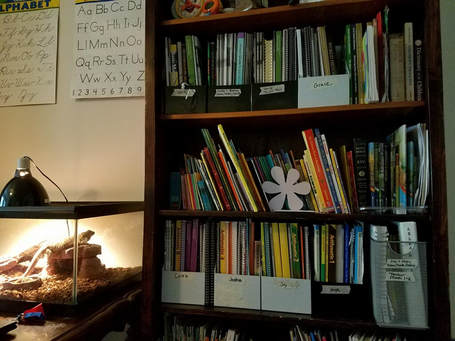 The summer is almost over and I’ve got to admit, I dread the start of school. While other parents are happily counting down the days until their little angels are out of the house for hours on end, I am cringing and working on lesson plans. Every year it is the same feeling. How in the world can I possibly do this? I mean, it’s not like I’m lying around all day eating bon-bons and watching Netflix! My days are full. Between laundry and cooking and changing diapers and cleaning and chauffeuring people around, I hardly have a minute to call my own. Throw in doctor’s visits and four therapy sessions a week plus some writing on the side and I’m tapped out. Don’t even mention church and small groups and AWANA and dog training and jujitsu practice! And none of that will stop with the start of school. School just gets added on top, and has to get done first. No wonder I’m freaking out over here! Usually we only take 2 months off during the summer. In the past, that’s been about as much as I can take before we all go crazy with no schedule. This year, my older two girls are taking some classes from a sort of umbrella school/co-op kind of thing. They take classes on Monday and do homework for the rest of the week. I love it because they can cover the tougher subjects like Algebra and science labs with someone who actually knows what they are talking about. I’ve discovered that my math skills end about half way through 8th grade. As soon as slope integers start I stop. But, taking outside classes means following an outside schedule and I’ve had to adjust to match our school dates a bit better. So this year we’ve had three months off. Three months of no school. Three months of not getting up at 6:30 in the morning and yelling at everyone to get out of bed so that we can start school at 8:30. (Ok, so yes, I’m not being honest. We’ve started school at 8:30 maybe once in the last three years. But it is the goal. Hence the yelling.) Three months of feeling frazzled and stressed and overworked and now thinking that there is no way in the world that there are enough hours in the day to add school to this mess! <Deep Breaths> The good news is that I feel this way Every. Single. Year. And every single year we survive and not only that, I find that I get more done when we’re in school than during the summer. Go figure. I don’t know how. I think it’s the same principle that says that the more classes you take in college the more free time you have. It’s a paradox, but it works and I for one am not going to question it. I just have to believe that it will work again this year. My books are all here (expect for the two that were backordered), my school room is cleaned. We have new pencils and notebooks. I’ve double checked that we can sign into our video classes. I’ve made lesson plans for the first week. I think we’re ready. I hope we’re ready. And this past week my kids have been at each other’s throats so I’m beginning to feel good about the start of school. Less free time for them to fight in. I think this is going to be good. I think we can do this. And what’s more, I think you can do it too! We can all make it! So, here’s to the start of school! Let’s see what new adventures and learning are in store for us! It’s going to be great! There are many, many reasons why I homeschool my children, but the one that people seem to understand the most is this: There is no way in the world that I am getting 7 children out the door to school in the morning. Getting somewhere by 8 am? Not happening. And people understand that. They might not agree with my reasons of giving my kids a better education, or getting to be involved in their lives, or keeping them sheltered from evil in the world, but they totally get the early morning problem. So, after watching the fabulous movie The Greatest Showman, we got the idea to make a spoof video explaining (sort of) why we homeschool. Enjoy! So, let me know, why do you homeschool?
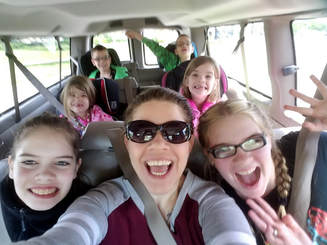 Recently, I broke one of my cardinal rules. I took a single day off of school. But, if I counted it as a day off of school, it would throw off my entire week numbering system. Rather than be completely off for the rest of the year with weeks not ending in multiples of 5 and our math and spelling tests days switched around, rather than experience those horrors, I decided to “count” the day as a day of school. In fact, I am aware that other schools often count such days as “school days.” We didn’t stay home and do nothing, although that would actually be a “day off.” Instead, we went to Legoland Florida. (Thank you Legoland for “homeschool day” prices! Now if only Disney would get on board…) So I don’t think I’m too far off in counting the trip as a field trip and thus a day of school, but it still seems sketchy to me. I’ve seen schools counting a trip to the movies as educational. Or a trip to the bowling alley. I know as a homeschooler we are supposed to find education in all aspects of our lives and I am not above making my kids calculate, sitting at the breakfast table, how many Cheerio boxes we will eat in a week if each child eats two servings five days in a row. But, the movies? I have never counted “field trips” as days of school. We go to the zoo, we go to the park, we go to the movies, but none of these are counted as “school.” So, for me to count Legoland was a big departure from the norm, (although, given the catastrophic alternative, who can blame me?) and I thought I would sit down and see just how “educational” the trip really was. 1. Telling Time. The first piece of education my kids learned was that driving two hours in the car is a long time. They had many opportunities to question just how much time had passed and how much more time was left. I admit that a few times I told them that five minutes had passed since the last time they had asked and they could figure out for themselves how much time was left in the trip. So, yes, educational. 2. Driver’s Ed. All of my children are too young to even be thinking about Driver’s Ed (And I’m talking to my 13 year old too! Dream all you want, Sweetie, it’s still years away!). But they learned no matter how many times the car you are caravanning with calls you to demand that you drive faster, a fifteen passenger van will start shaking at 75 miles an hour, which is five miles over the speed limit. So obeying the law is a must. (I’m thinking that making my children take their learner’s permit test in the Sandcrawler (our name for the van) might be a good idea.) Educational? Sure. We can chalk that one up to Social Science. 3. Measurements. All of the rides at Legoland have height requirements. The little kids had to step up to a yardstick to see if they met the mark. We’ll call that learning about inches and measuring things. Another educational check. 4. Social interaction. This is the one that people are always accusing homeschoolers of missing. “But how will they know how to get along with other people if you never let them out of the house?” Nothing says social interaction like 10 kids under the age of 13 trying to walk around Legoland together. They learned about the buddy system and getting lost and generally getting on each other’s nerves. The five adults who went also got to experience these things, but we added in yelling and scolding and pulling our hair out, so I’m not sure how educational that is. 5. I’m racking my brains here for more… Ah! More Driver’s Ed. A few of the kids survived the half hour long line (that seemed to take a million times longer) in order to drive little Lego cars around a miniature road system, complete with stop signs and crossing traffic. I’d like to say this was educational for the kids, but I think I learned more than they did. I learned that no matter how many times you are yelling “Stop!” to a six year old who is behind the wheel of a car, they are really not going to be paying attention. Which, one could argue, might be why six year olds are not allowed to drive real cars, only bumper cars, because every car that they drive is going to wind up a bumper car. 6. Peer pressure. Does this count as educational? I don’t know. I do know that peer pressure is something that other parents are always talking about. They act like only their children’s friends exert this pressure, but I’m here to tell you that my kids can peer pressure each other just fine. I don’t know how it’s done in the “real world” but in our house it’s done through mocking and nagging and lots of sarcasm and eye rolls. My eldest daughter was nervous about riding a roller coaster and through the use of all of the above we got her on one and strapped down, where she discovered that she actually enjoyed it! So, sometimes peer pressure can work for good. (I won’t tell you the looks I got from another mother who was trying to reassure my daughter about the safety of the ride just before I turned around and said, “This is a wooden one, Grace. They have the highest number of crashes.” True? I don’t know. But the look on her face was worth it.) 7. I just thought of one more! Map reading! They had to use the Legoland map to find out where they were and which path was the best to get where they wanted to go. Really practical in this day and age of Google maps? I don’t know. But it should count for something. I could probably keep stretching things and making them sound educational, but I’m still not completely sold that Legoland should actually count as a field trip. Maybe I should have made them write a paper about it when they got home. I did make them double up on quite a bit of school that week, all of the important subjects got covered, so I don’t feel too bad about not counting it as a day off. What do you think? Do you count trips to the zoo or the grocery store as school? What makes a field trip a field trip? What makes a day outside of the classroom educational? Let me know, I’d love to hear your thoughts! Two years ago we moved into a new house. It’s twice the size of our old house, but the laundry room is a bit smaller. Don’t get me started on it. The original house plan of the bigger house had the laundry machines in a closet. A closet! A six bedroom house and they thought all the laundry needs could be covered in a closet barely large enough to fit a washer and dryer. Ha. We had to wall off part of hallway and put in a door in order to at least get a little room to hold laundry baskets and the cats’ litter box.
About six months ago I started noticing that the laundry room was really dusty. There was dust on the back wall. There was a wire shelf over the machines and everything on the shelf was covered in dust as well. Now, if there is one chore in the world that I truly, deeply hate, it’s dusting. Don’t ask me why. I’d rather clean a toilet than dust a shelf. So, not wanting to deal with the problem, I just ignored it. Oddly enough, it didn’t go away. (I’m still waiting for the day that I ignore a problem hoping it fixes itself—and it does!) I assumed that since the laundry room was smaller than our old one, it would naturally get more dusty. Also, we used to keep the door open to our old laundry room for the cats, but we put a cat door in our new one, so the door can stay shut and the dog can’t eat all the cat food. That had to be the reason for the excess dust. Months went by. I’d run a load through and think, “Man, it’s dusty in here.” Since I have about 3 loads of laundry to do a day, that’s a lot of thinking about dust and not doing anything about it. My plan of ignoring the problem was going great until my husband noticed the dust. He mentioned it to me, and I promised I would clean the laundry room. I know. I’m an amazing wife. I took a Swiffer duster into the laundry room, prepared to do battle with the forces of entropy and noticed something right away. The lint hose to the back of the dryer was not attached to the dryer. Huh. So, for however many months this had been going on, the dryer had been shooting lint into the laundry room. Three loads a day worth of lint. I don’t know if you’ve ever had to clean accumulated lint off the walls and tiles of a laundry room, but it’s not easy. And the whole time I was working I was thanking God that our house had not caught fire. According to Google, dryers are responsible for 34% of all house fires. You better believe that I check the back of the dryer each time I run a load now. That little bit of dust that I didn’t want to bother with could have turned into a massive and potentially deadly problem. The same is true for other things in our lives. The things we don’t want to deal with or face, the little issues we hope will just go away, the relationships that we ignore, hoping they magically improve on their own, all of these things can turn into huge disasters down the road. Far better to spend the time now to face and fix the problem than to spend 2 hours scrubbing a tile floor while continuously sneezing. So go check your dryer hose. It could save your life. And no, I still haven’t dusted the stuff on the shelf yet. I’ll get around to it. Growing up, writing, in my family, seemed to come as easily as breathing. My brother and sisters and I were all avid readers and had no problem putting our thoughts down into words. In college, as a music major, I had a job proofing essays for the football team. Wow. It was my first time coming face to face with the realization that everyone in the world does not love writing as much as I do. I was thinking about this the other day as my 4th grade son worked on an essay for science class. I was trying to come up with my next blog post and the thought hit me, I could write about writing! But no, was my first thought, everyone already knows how to write. That’s when I remembered my time proofing essays. So, maybe not everyone knows how to write and maybe not everyone thinks it’s easy to teach. Before you start thinking I’m full of myself and extremely arrogant, let me hasten to add, I also have a sneaky suspicion that everyone might not be awful at math and science like I am. There might be people out there who don’t have to look up in the answer key in order to explain a math problem to their child, or settle for watching science experiments on Youtube because theirs always fail. If there are such extraordinary genius parents in the world, they should obviously be writing blog posts about how to be better at those things for me to read! Back to the basics. Before your child even writes his first 5 paragraph essay, he will write a paragraph or maybe even two paragraphs! This doesn’t need to be a frightening thing. I know that when I say to one of my children, “Write a paragraph,” the first response is always weeping and wailing about the impossibility and extreme time consumingness of the project. But it doesn’t have to be hard. When we broke down our paragraphs into steps it became so amazingly simple that my son actually said, “That wasn’t so bad, Mom.” High praise indeed. Step One: Choose a topic. In our case we had the assignment of picking a celestial being to write about. My son chose Pluto. I’d love to tell you that we went to the library and checked out a selection of books about Pluto in order to prepare for our two paragraphs. That would be my recommendation to other people. In my case, with a medically fragile, oxygen dependent child, and 7 others hooligans who are well aware that Mom can’t yell at them in a library, I went a different path. Back to our old buddy Youtube. (No judgment here if you have an only child and still can’t find time to make it to the library. I just feel like if I have a good sounding excuse I should use it.) We watched several children’s science programs on Pluto and took notes. Every time they mentioned a fact I had my son write it down. He started to do this in complete sentence form, which, while it made my writing heart happy to see, was way too time consuming. I showed him how to jot down just enough to remind himself of what he wanted to write. It looked like this: Step two: I had him decide what his two paragraphs were going to be about. He decided that paragraph one was going to be about What Pluto was, and paragraph two was going to be about Where Pluto was. We then divided up all the facts into those two columns. What and Where. Step three: he wrote a topic sentence to begin each of the paragraphs. I explained, for the umpteenth time, that a topic sentence begins a paragraph and covers what the paragraph is about. Every sentence in the paragraph should go along with the topic. Like so: At that point, we were running a bit short on time. It was almost lunch time, I had to feed the baby, make lunch for everyone else, get the house cleaned up, and fold at least a couple baskets of laundry before the physical therapist arrived to work with the baby. (See? All good excuses) So, I suggested that my son dictate to me and I would write down the paper. This might seem a bit like cheating, but for kids who have a harder time forming the letters on the page then forming the words in their mind, this can be a good teaching tool. Penmanship and spelling are great, but if you can’t get past worrying about them it will be difficult to make your words flow together. My son used the topic sentence we had written and then looked at the facts we had written under each paragraph heading. He linked the facts together in ways that made sense and told me what to write. We then moved on to paragraph two and repeated the process. Voila! A two paragraph report on Pluto that didn’t require tears, threats, or an insane amount of time: Hopefully, writing comes easily for your children and you hand out 10 page essay assignments to your 2nd graders without a qualm, but if not, maybe this has given you a few hints and get you started to writing fun! Well, the holidays are over and it’s back to school. I confess, we started back a whole week earlier than I intended because we needed order back in our lives. It’s amazing how children, who complain about doing school and not having time to play, suddenly are bored (bored = causing trouble) when they have weeks of free time. It’s the old “If you don’t find something to do I will find you something to do!” (All those things your mother said to you that you never thought you would catch yourself saying!)
Over the break, Pureflix reached out to me with a blog post on different learning styles. Pureflix is a Christian film studio that produces and streams family friendly movies and other content. Like Netflix, but without all the titles and cover images that you quickly try to shield your child from as you’re scrolling through the list. Knowing your child’s learning style can be an invaluable asset as you endeavor to teach. I’ll let you go over to their blog to get the full explanation, but it has been broken down into 4 styles. Visual, Auditory, Reading/Writing, and Kinesthetic. The idea is that each of us have a way that we best process information and by teaching in that style your child will learn faster and more efficiently. Visual learners need graphics and images to help them understand a concept. Some of my kids learn this way. When we’re doing math especially I find it very helpful to draw out the idea in picture form. When you’re trying to understand which fraction is bigger it’s great to use a picture of a pizza and talk about how many slices you want to get versus how many slices your brother is getting. Auditory learners like to hear things out loud. Oddly enough, out of 8 kids, I don’t really have any auditory learners. Sure, they all like to talk out loud and make noises while they are working, but generally these all have nothing to do with learning and everything to do with annoying the person sitting across the table from them. It is very hard to do your math when your sister is belting out some song from Newsies while doing her own math. Reading/Writing learners like to make lists and notes about what they are reading. Who doesn’t like a list? A beautiful, clearly laid out list with all the information neatly grouped, where you can see how everything relates and…ok, so I might be a reading/writing learner. Or maybe I just love lists. Does anyone else like to make a list and cross things out? Do you break things down into smaller items on the list so you have more things to cross off? Do you enjoy the feeling of drawing a line through each item? Or is it just me? Kinesthetic learners like to move and act things out. To touch what they are doing. These types of learners can really enjoy manipulatives and lapbooks. I am not a kinesthetic learner. In fact, I hate lapbooks. I know. That’s a horrible thing for a homeschool mom to say. Coloring, cutting things out, gluing tiny pieces of paper <shudder>. Which brings me to my own personal learning style tip. Knowing your child’s learning style is very important, but it is equally important to know your teaching style. With my first child I tried to be a kinesthetic teacher. We did lapbooks. We colored pictures. We spent hours cutting out tiny intricate things and creating paper projects that instantly tore and were thrown away. (Ok, maybe that’s a slight exaggeration, but it felt that way.) Basically, I made myself miserable because I thought that this was what homeschooling was all about. If I didn’t lapbook, I wasn’t teaching, and I quickly reached the point where I would rather stick a pencil in my eye than look at another lapbook. It seems like common sense now, but lapbooks were not my teaching style and that was ok. We no longer lapbook. My kids color on their own time. And if we’re short on time, I have no problem stepping in with the scissors and quickly cutting out whatever it is and moving on. I’ve learned my own teaching style and while I try to accommodate each of my kids learning styles, I remember that if I’m going crazy trying to teach it in a certain way, they’re probably not really learning anything either. Bonus tip: As I finished writing this post, I remembered something that my vocal professor taught me in college. He said that if you really want to remember something, try to use at least 3 ways to learn it. That way, under pressure, your brain has more than one built in pathway to follow to the answer. For example, instead of just memorizing a song by just listening to it over and over, use two other styles in addition. Play the song out on the piano as you read it. That’s the kinesthetic part. Write out the notes on staff paper. That’s the reading/writing. Then, under pressure, you are less likely to drawn a blank. I found this useful in my other classes as well. Just going over my notes from a class was not as effective as copying them out again, while reading them out loud. Using all four learning styles to study would help cement the information in my head and if I forgot something I’d read I could try to remember what it sounded like, what it looked like on the page, what it felt like to write it. Check out additional homeschool resources that Pureflix has to offer here. Confess, at least once this Christmas season you’ve thought about asking Santa for a bark collar for your kids. Just imagine, they’re all the way across the house, you’re yelling at them to stop beating up on their sibling, they don’t listen, and “Zzap!” you hit the button on a remote and they get buzzed. Instant obedience.
Now, we all know that, as good an idea as it sounds, it would probably land us in hot water with Child Services. So, enjoy the daydream, but please don’t attempt to use it. For dogs though, it works great. I’ve read the shocking kind is best reserved for professional dog trainers, but the ones with vibration that are activated by remote are a wonderful training tool. (I researched the kind that goes off with loud noises and decided that in our house it would just be going off constantly, whether or not Po was barking.) Our Goldendoodle can get loud sometimes. He’s a “small” which means that he weighs 35 pounds, thinks he’s 60 lbs and sounds like it when he barks. He is also a bit clingy. His two “mommies” take him everywhere they can, and when he has to be left behind it upsets him. They had been attempting to train him to lie quietly at their feet at the table while we eat. Mostly it was working, except for the once or twice a day when someone would dangle food a bit too near the edge of the table and, like Moby Dick, Po would breach and snap the food before anything could be done to stop him. After the time when the last Hawaiian sweet roll had been fought over and divided between the winning children, only to disappear down Po’s throat, I decided that we needed a little space between us and the dog while we were eating. We looped his leash on the newel post at the foot of the stairs so he could watch us and not get too lonely. And bark. Loudly. In between chewing on the foyer rug and trying to eat the Christmas garland I have wrapped around the stair railing. I was frustrated, but my eldest calmly went and got his bark collar. We hadn’t used it for a while so I didn’t think it would work. She put it on him and he instantly settled down. She was right. He knew what it was. I sat there through the meal with the remote in my hand and didn’t have to push it once. The next day, Po was getting too wild in the backyard, barking and chasing my five year old, who didn’t like it, and I put the collar on him again. Like flipping a switch, he calmed down and sat in the middle of the yard, no longer interested in causing mayhem. The downside though, is that Po knows when he is wearing the collar. He’s not learning to not bark or not chew. He’s learning to not bark or chew when a black device is strapped around his neck. Take it off, and all bets are off as well. He’s only good while he knows that he can be disciplined. My kids are like this as well. As long as I’m in the school room, standing over them and watching what they are doing, they diligently finish their work. But if I have to walk out? Poof! It’s like magic. Half of them disappear, and the other half get into a fight over who gets the green pencil. The younger ones at least. The older two are almost completely self-taught. They have reached the stage where they manage their own time and learning and finish their work without outside pressure. I think this is every parent’s goal. We want our kids to be self-motivated to learn. The threat of us hanging over them will only get them so far. If they only learn to work hard when someone is watching them, holding that bark collar remote, then they’re not really learning anything. It takes time. I can get discouraged when I waste ten minutes searching the house for a missing 6 year old who managed to disappear in the five minutes it took me to answer the phone, but then I remember that her older sisters used to be just the same, and look at them now! I’m always tempted to increase the level of pressure or supervision, but if I remember my goal, that I want them to be self-sufficient, then I can give them the space to make mistakes and hopefully move closer to the day when I can go the bathroom and not come back to World War III. So, this Christmas, when your kids are going crazy, remember that this too shall pass. They will soon grow out of this phase, and if we’re patient and consistent and give them opportunities to control themselves, one year, we’ll all have a peaceful, quiet Christmas. <snort> Ok, I can dream, right?  It started with a simple question. Write a synonym for each word. The words were incredibly difficult for a 2nd grader. Words like Big and Cold. But that wasn’t what was throwing my daughter into a fit of despair. She couldn’t remember what a synonym was to begin with and was feeling frustrated. “I don’t know!” she wailed. “Here,” I said. “Let me hel--” “But I don’t know!” “Let’s think ab--” “I don’t know!” “A synonym is--” “I don’t know!” she screamed louder, clearly not interested in gaining any enlightenment. “Fine,” I snapped. “Just sit there until you figure it out.” “But I don’t know!” I ignored her and continued school with her siblings. Five minutes of wailing and crying later, she looked ready to be taught. “Do you need hel--?” I tried “I don’t know!” She was back to interrupting me before I could even finish my sentence. “If you look back on pag--” “I don’t know!” “Have it your way,” I rolled my eyes. “You are not getting up until you complete that page.” “But I don’t know!” I sighed and pointed to the page. “This one. Here. Finished.” I said. She pouted, flounced about, fell out of her chair several times, dropped her pencil a few times more, yelled “I don’t know” once, and generally tried to get a reaction out of me without looking once at her book. I studiously ignored her, which was hard given that we were sitting right next to each other at the table. Fifteen minutes later, I looked up from a math lesson with her brother and realized that it had been quiet for a while. “Done!” she smiled. I checked her work. Yup. She’d managed to not only remember what a synonym was, all on her own, but she’d also correctly filled in each blank. Does this sound familiar to any of you? Do you have those days when your student is anything but ready to learn? I know I get frustrated with my kids sometimes because the answer is so obvious! “I’ve explained it to you ten different ways! Anything more and I’ll just be giving you the answer!” Well, I had a little wake up check today. We took the week off of school to catch up on all the many things that there just isn’t time for during a typical week. It always starts with decluttering bedrooms. The two little girls actually hadn’t let their room reach “Let’s burn it all down and start over” proportions, but their little brother’s room? Yikes! He’s really good at “picking up,” in that, you can send him to his room and he can get everything off the floor and onto a shelf. But organizing? He’s three and still not potty-trained, so putting things in their proper place is beyond him. Ten minutes in and I was feeling completely and utterly overwhelmed. I had pulled everything off the shelves that didn’t belong and could no longer see the floor. I had a 13 gallon trash bag stuffed to the gills. I had a billion little pieces of a hundred different toys that needed to find each other. Basically, I wanted to sit in the middle of the floor and scream, “I don’t know!” I don’t know how to bring order to this chaos. I don’t know where to start. I don’t know how to clean this up. And as I took a few deep breaths and focused on one item at a time, it hit me. I’m an adult and I get overwhelmed by a project. The magnitude of the finished task becomes so threatening that I can’t see the little steps needed to reach completion. And I want to shut down and give up. Me. An adult. Of course our kids are going to flip out about simple (to us) word problems and three sentence essays. It’s overwhelming and threatening. But if we give them a chance to work through their “I don’t knows” and figure out what the next step is, they’ll be able to accomplish anything they set their minds to. Including cleaning their own rooms. |
Erin Evans
You know that family that shows up to church in the 15 passenger van? The one that homeschools? Ever wondered how they make it through the day or wished you could be a fly on the wall of their house? Well, I'm inviting you in. I'm 36 and I ride herd on 8 children (oldest is 12), 3 cats, 2 bearded dragons, and one puppy. It's loud, chaotic, and imperfect. Welcome to Life in the Big House! Archives
November 2018
Categories
|

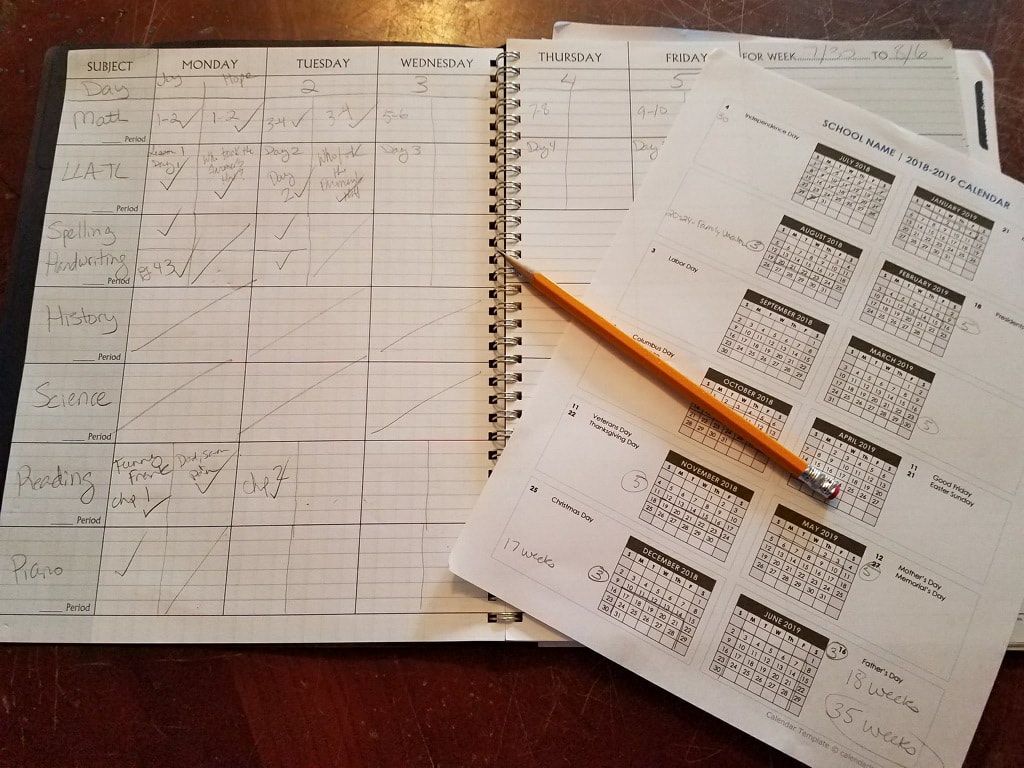
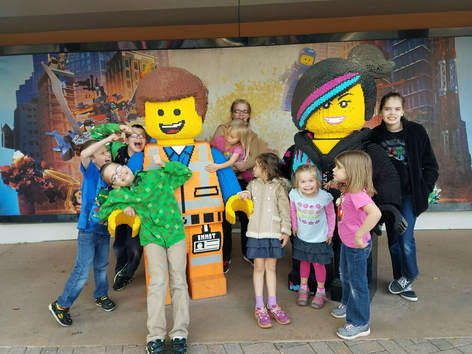


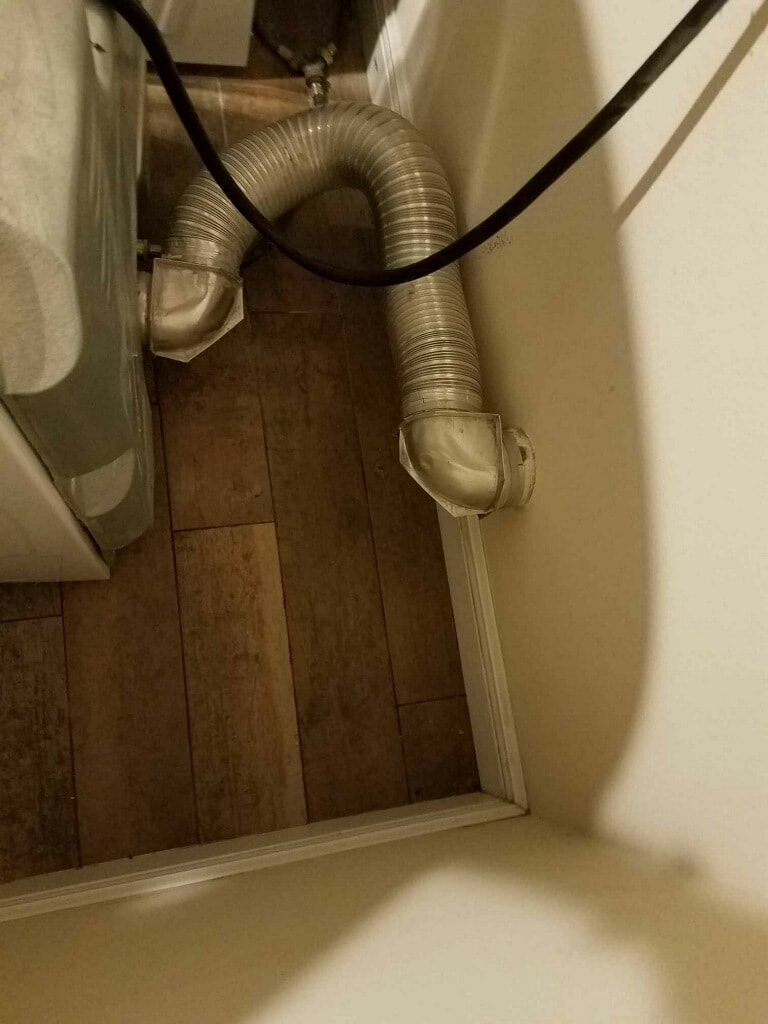

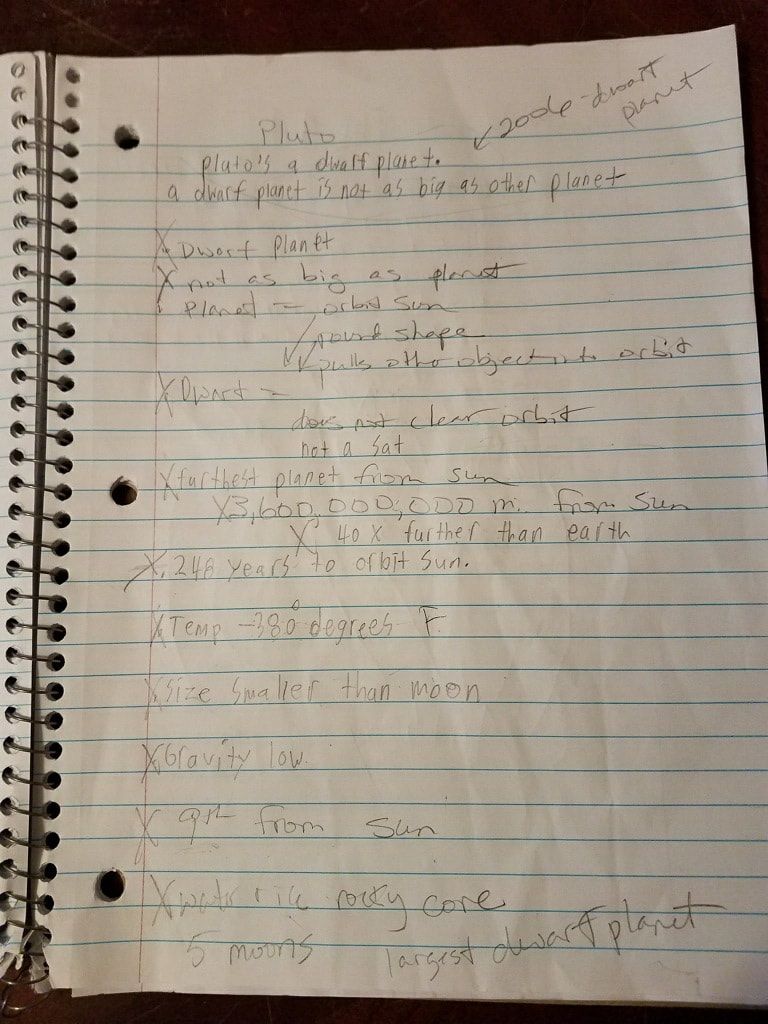
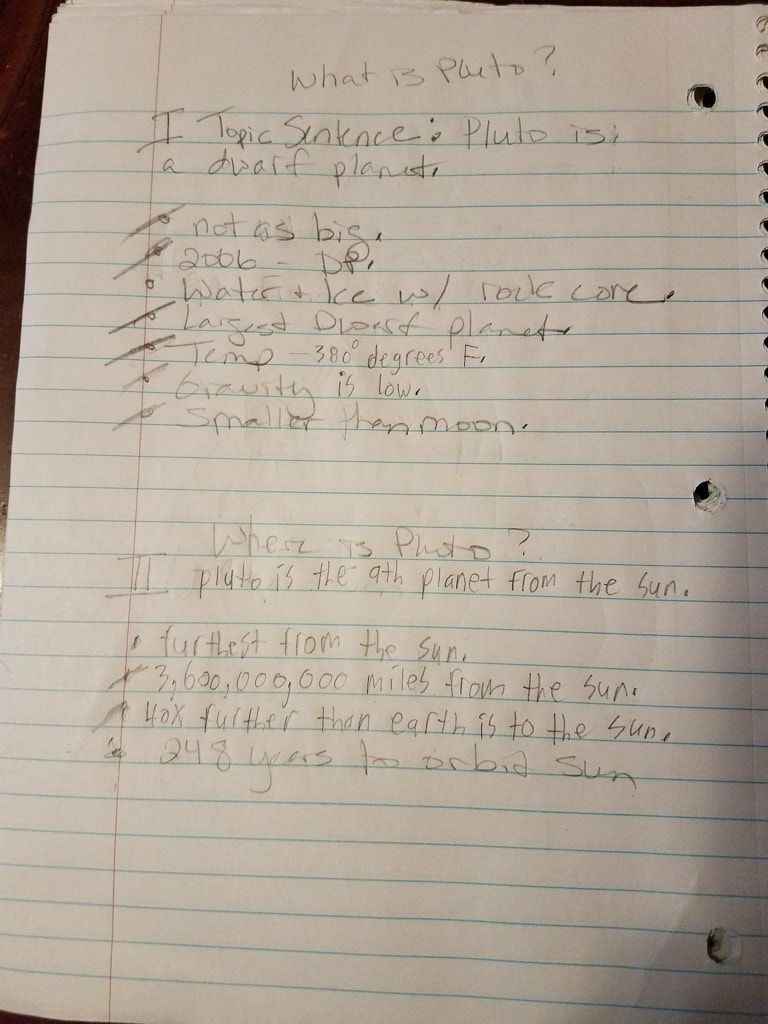

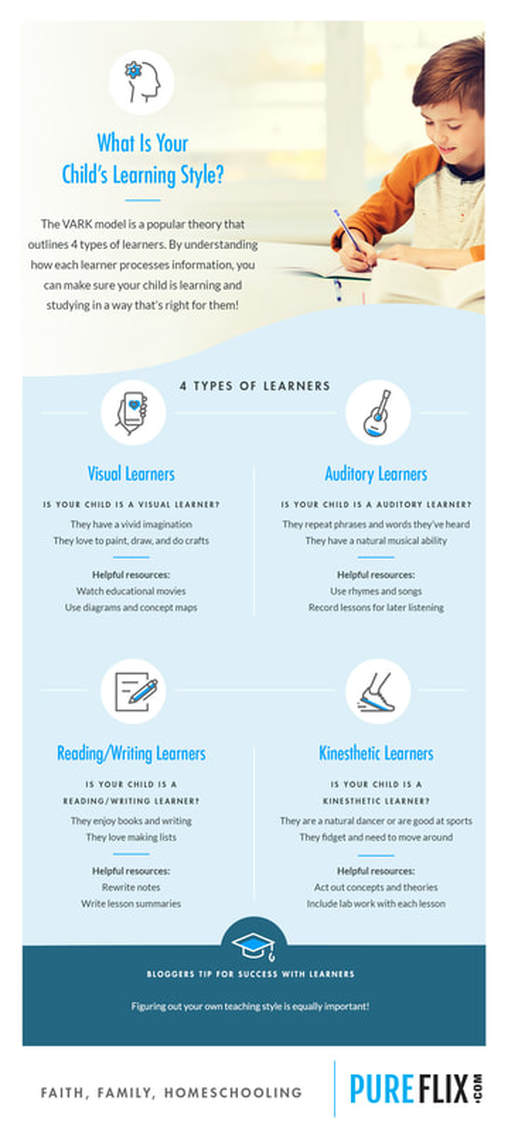

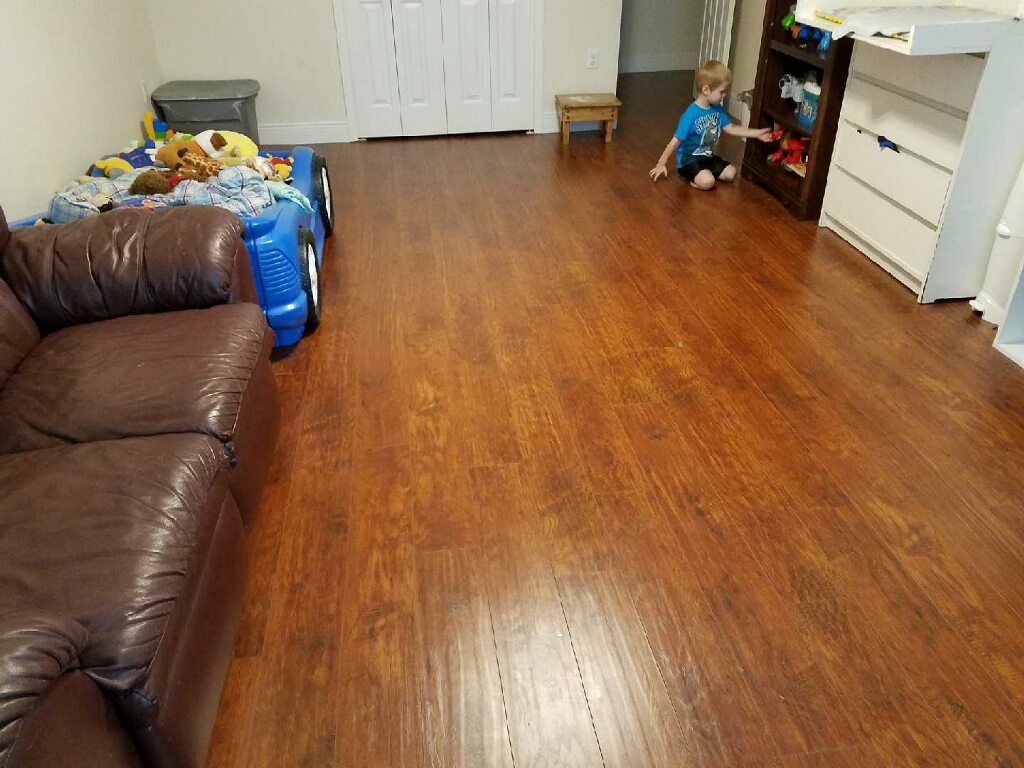
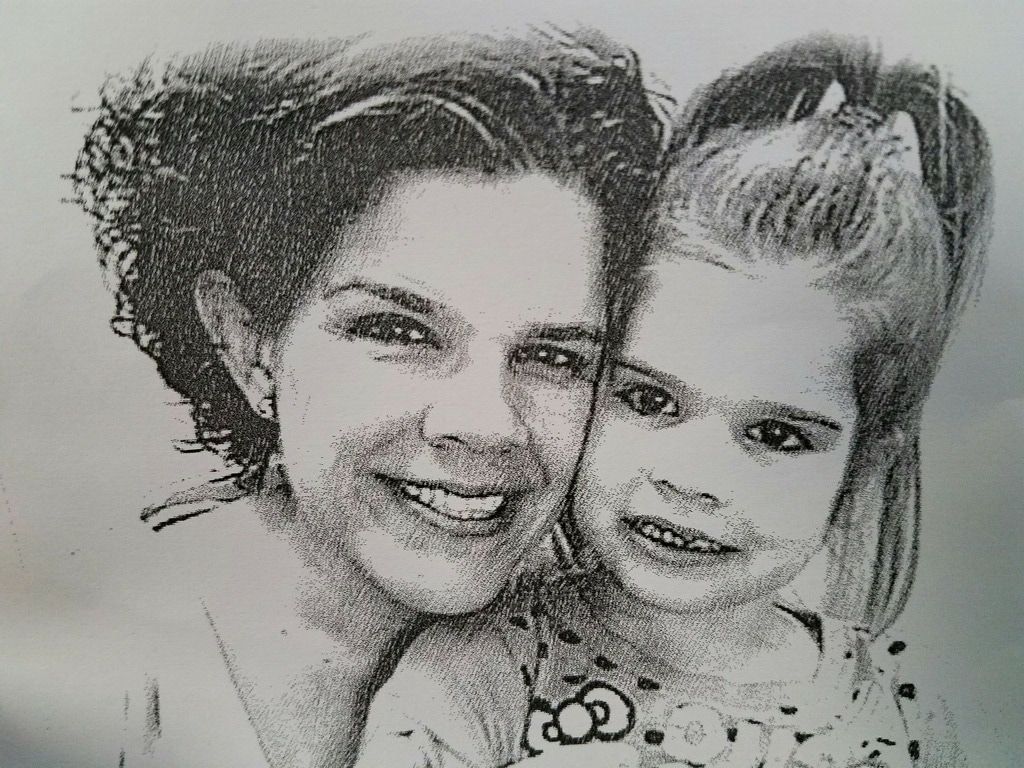
 RSS Feed
RSS Feed
